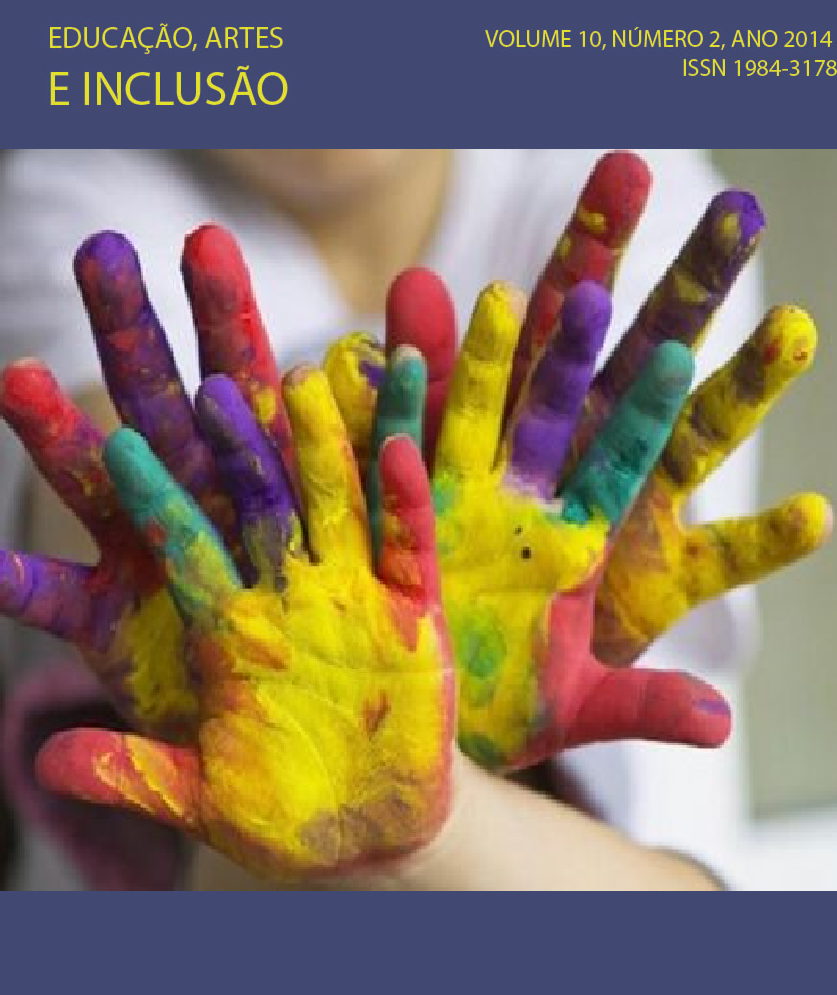AÇÕES PEDAGÓGICAS PARA INCLUSÃO DE ALUNO COM TRANSTORNO DO ESPECTRO AUTISTA NUMA ESCOLA DE MÚSICA DE SÃO PAULO: RELATO DE CASO
DOI:
https://doi.org/10.5965/198431781022014138Abstract
O Transtorno do Espectro Autista (TEA), como é denominado pelo DSM V é um quadro diagnóstico que atinge 1 a cada 200 pessoas e que gera características atípicas em relação ao comportamento, linguagem e socialização. As iniciativas em prol da inclusão de pessoas com TEA no contexto educacional, vem crescendo sensivelmente e por esse motivo, o contexto musical não pode ficar à parte dessas discussões, visto que a música faz parte do leque de conhecimento de todas as culturas. Portanto, este artigo tem por objetivo apontar as ações pedagógicas utilizadas para inclusão de um adolescente com Transtorno do Espectro Autista (TEA) numa tradicional escola de música de São Paulo, entre os anos de 2006 a 2013. Para tanto, foi realizado um relato de caso, baseado nos relatórios, documentos, laudos e avaliações arquivadas no prontuário do aluno na respectiva escola. Os resultados apontam nove ações pedagógicas específicas para que o aluno pudesse permanecer na escola dentro do contexto pedagógico musical comum a todos.Downloads
Downloads
Published
How to Cite
Issue
Section
License
Copyright Statement
The Educação, Artes e Inclusão is a journal that follows the Free Access Policy. The articles published by the journal are free of charge, intended for educational and non-commercial applications. The articles whose authors are identified represent the expression from the point of view of their authors and not the official position of the Educação, Artes e Inclusão Journal or the Educação, Artes e Inclusão Research Group.
Authors who publish in this journal agree to the following terms:
(A) Authors retain the copyright and grant the journal the right of first publication, with the work simultaneously licensed under the Creative Commons Attribution License which allows the sharing of the work with acknowledgment of authorship and initial publication in this magazine.
(B) Authors are authorized to take additional contracts separately, for non-exclusive distribution of the version of the work published in this journal (eg publish in institutional repository or as a book chapter), with acknowledgment of authorship and initial publication in this magazine.
(C) This journal provides public access to all of its content, as this allows for greater visibility and scope of published articles and reviews. For more information on this approach, visit the Public Knowledge Project.
This journal is licensed under a Creative Commons Attribution-NonCommercial-ShareAlike 4.0 International License. This license allows others to remix, adapt and create from your work for non-commercial purposes, and although new work must give you due credit and cannot be used for business purposes, users do not have to license such derivative works under the same terms.



